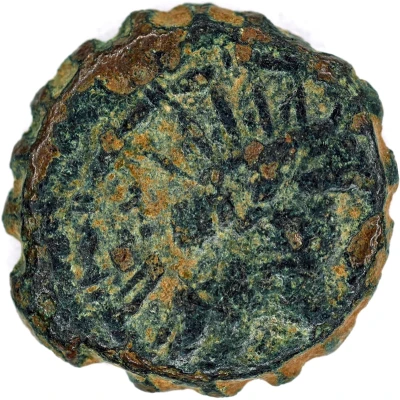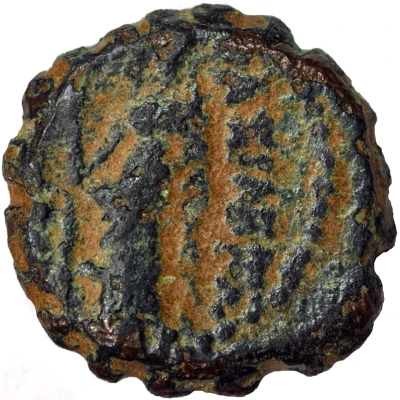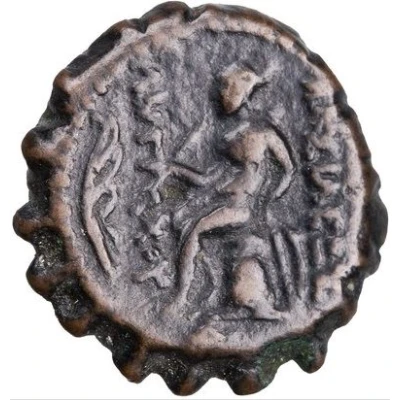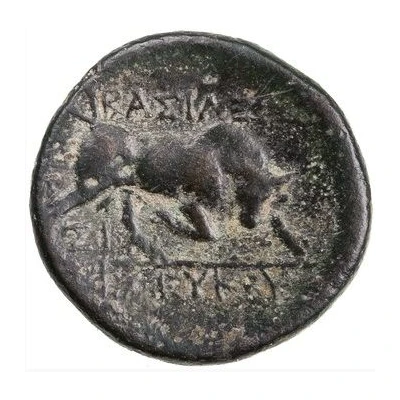


© SP
Hemichalkon - Antiochos IV Ptolemais-Ake 173 BC - 168 BC
| Bronze | 2.5 g | 14 mm |
| Issuer | Seleucid Empire (Seleucid Empire (305 BC - 64 BC)) |
|---|---|
| King | Antiochos IV Epiphanes (175 BC - 163 BC) |
| Type | Standard circulation coin |
| Years | 173 BC - 168 BC |
| Value | Hemichalkon (1⁄96) |
| Currency | Drachm |
| Composition | Bronze |
| Weight | 2.5 g |
| Diameter | 14 mm |
| Shape | Round (irregular, Serrate) |
| Technique | Hammered |
| Orientation | Variable alignment ↺ |
| Demonetized | Yes |
| Updated | 2024-10-10 |
| Numista | N#126404 |
|---|---|
| Rarity index | 78% |
Reverse
Veiled and draped goddess (Hera?) standing while holding long sceptre or torch with legend on either side.
Script: Greek
Lettering: ΒΑΣΙΛΕΩΣ ΑΝΤΙΟΧΟΥ
Translation: King Antiochus (IV, Epiphanes)
Interesting fact
One interesting fact about this coin is that it features a unique blend of Greek and Persian design elements. The obverse (front) side of the coin depicts the king's bust, while the reverse (back) side features a mythological creature, possibly a Griffin, which is a symbol of protection and strength in both Greek and Persian cultures. This blending of cultural influences reflects the complex history of the Seleucid Empire, which was founded by a Greek general but eventually came to encompass a vast territory that stretched from the Mediterranean to the Indus River.



